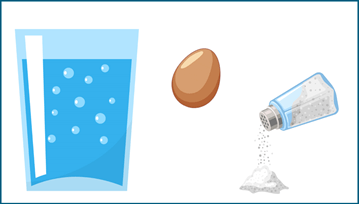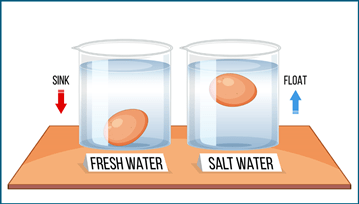Here are the steps to perform the experiment:
Materials
Materials needed:
A raw egg
A glass or container
Salt
Water

Instructions
Fill the glass or container with water, leaving some space at the top.
Gently place the egg in the water. The egg should sink to the bottom.
Take the egg out of the water.
Start adding salt to the water, a tablespoon at a time, and stir until the salt dissolves.
Place the egg back in the water after each addition of salt and observe what happens.
Keep adding salt until the egg floats to the surface and remains there.

Explanation
The density of water increases as salt is added to it, making the water denser (more molecules per square inch). When the egg is placed in the plain water, it sinks to the bottom because the density of the egg is greater than that of the water. However, as salt is added, the water becomes denser than the egg, causing the egg to float to the surface.
This experiment illustrates the concept of buoyancy and the Archimedes' principle, which states that the buoyant force on an object is equal to the weight of the water displaced by the object. The egg floats because it displaces a volume of water that weighs more than the egg.

